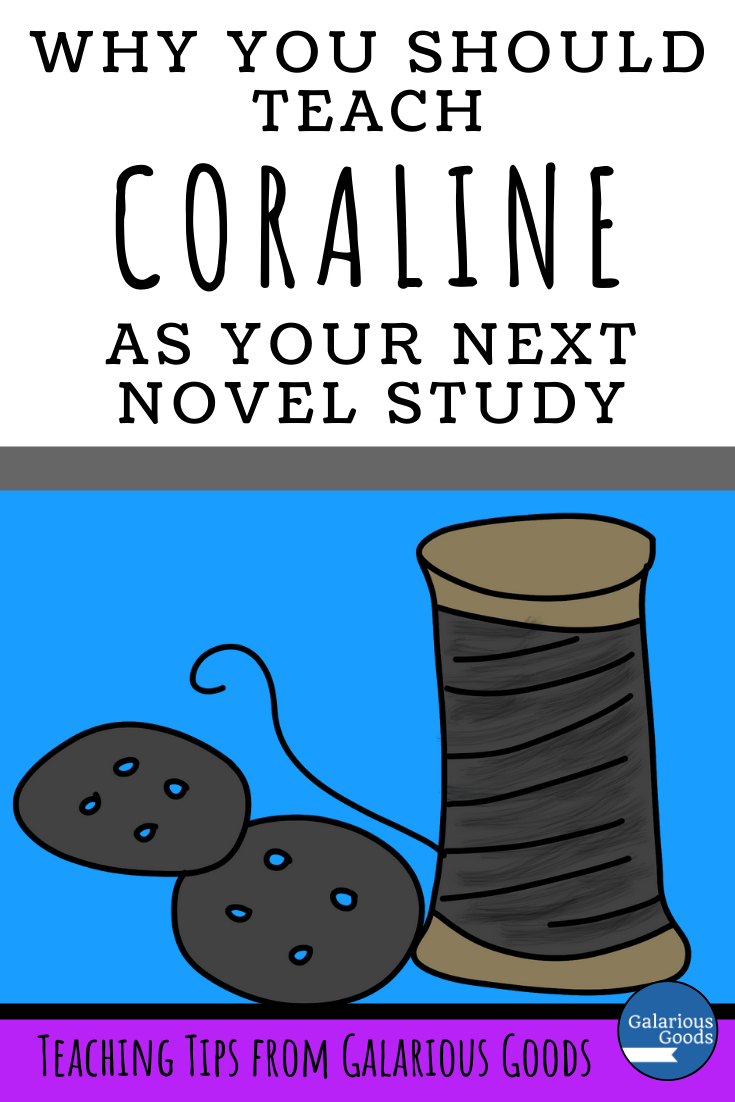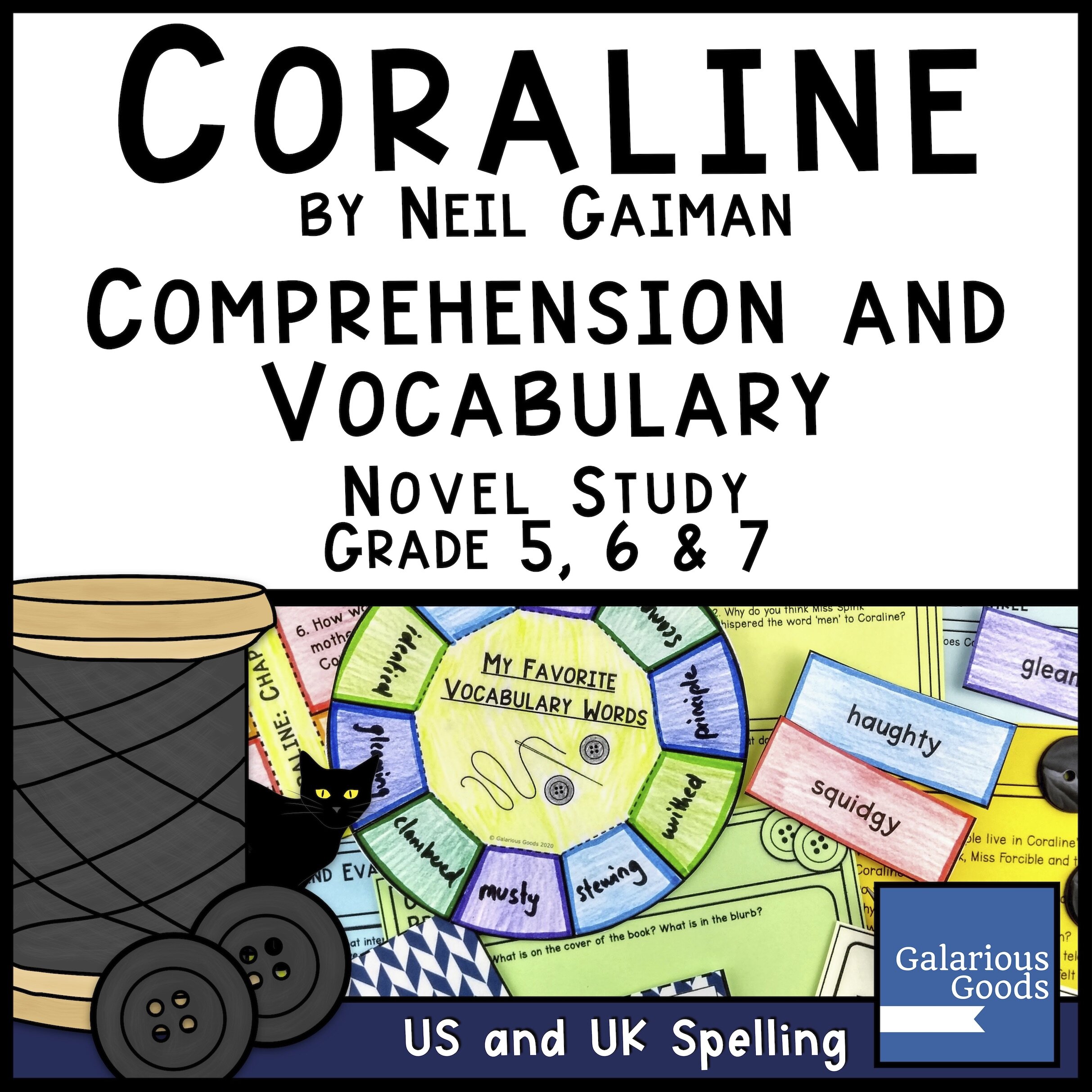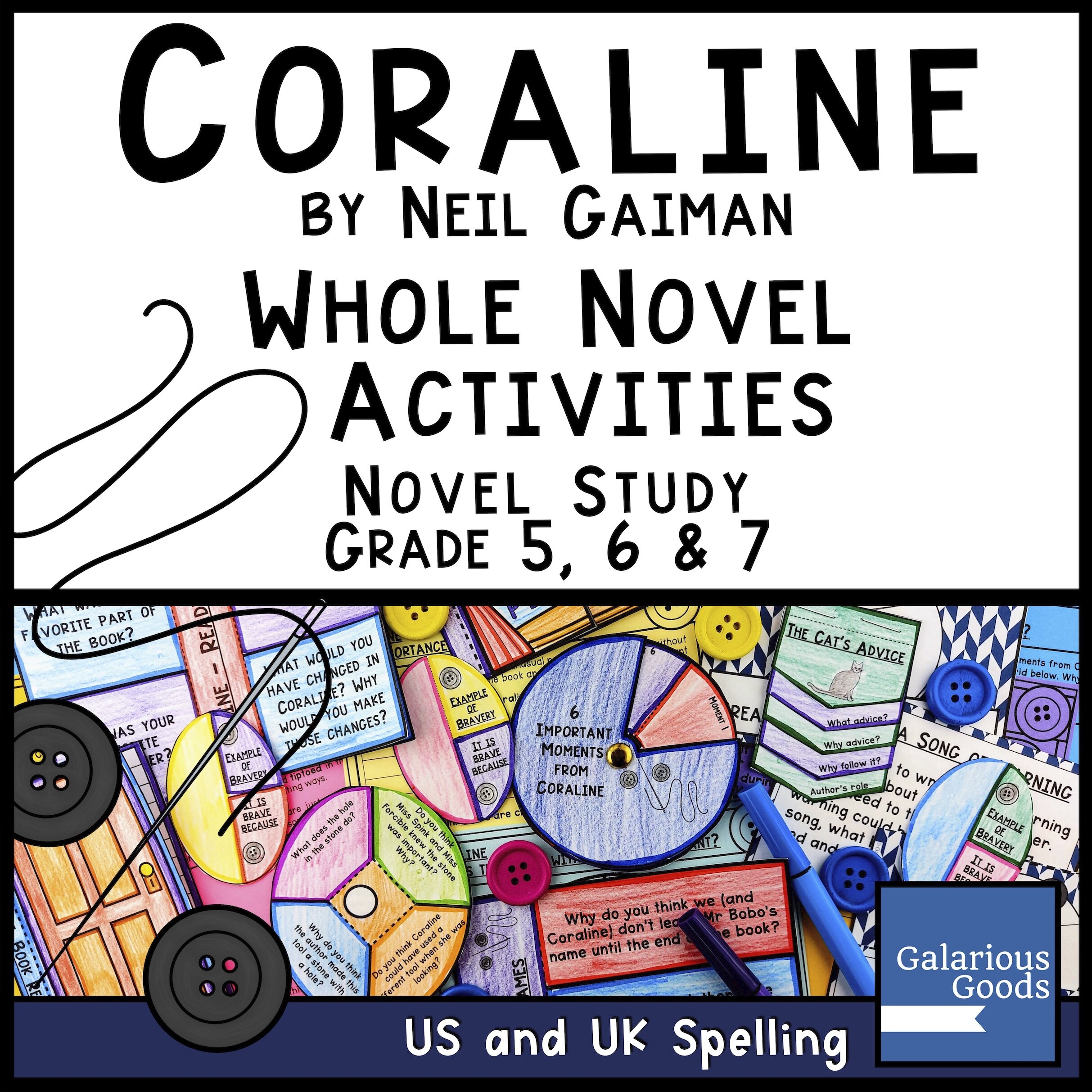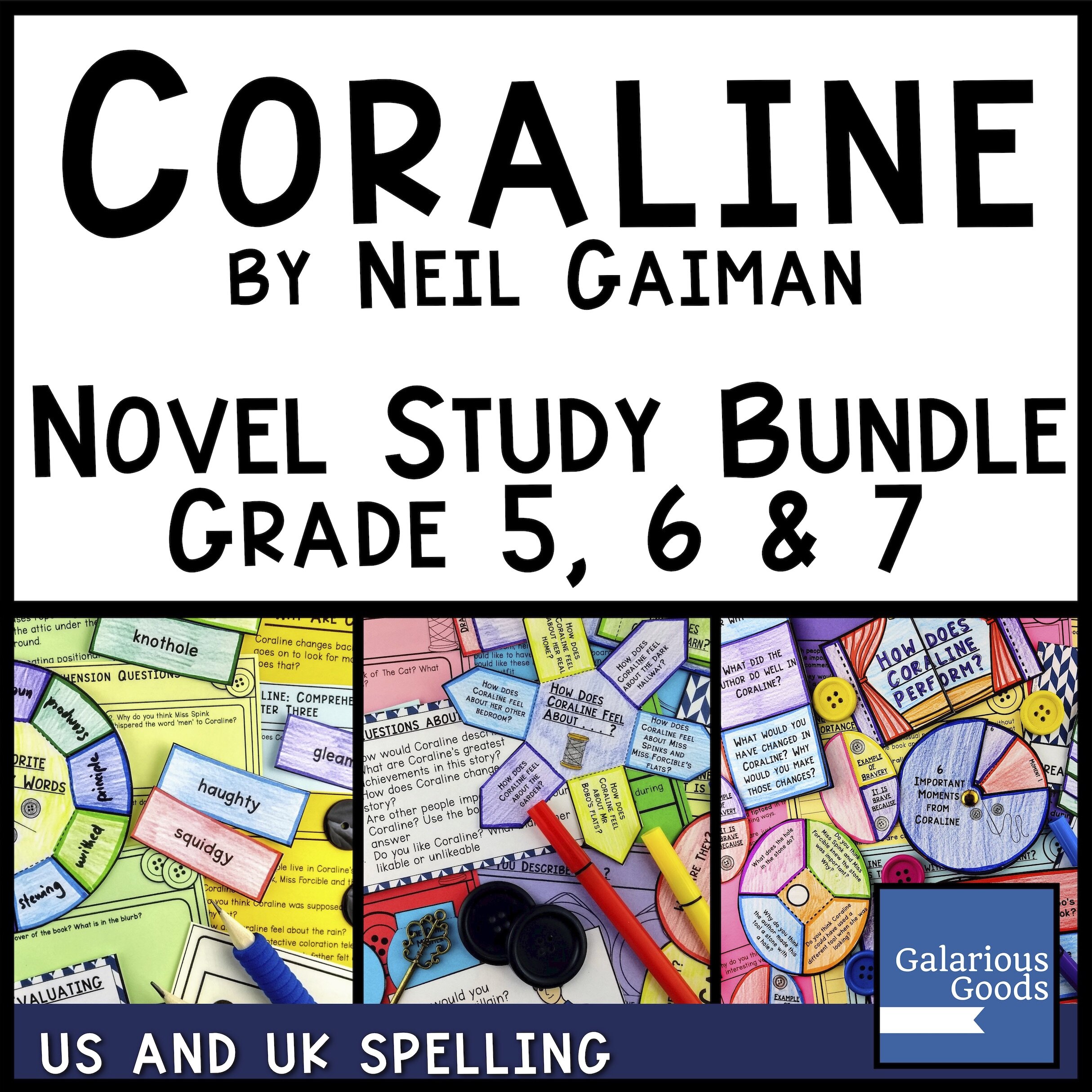Why You Should Teach Coraline as Your Next Novel Study
/Are you looking for your next classroom novel study? Here’s why you should consider Neil Gaiman’s Coraline.
Coraline tells the story of a young girl who’s recently moved into an apartment in an old house. In the process of ‘exploring’ she discovers a door that leads nowhere . . . until it does. She finds herself in the ‘other’ world, a world where the other mother wants to fulfill her every wish. Or does she . . . ?
This short novel is filled with interesting characters to explore, storylines to follow and themes to examine. But here’s some other reasons you should teach Coraline in your classroom.
Coraline is Filled With Wonderful Writing and Language
Neil Gaiman is a wonderful writer and his writing style shines in this book. It’s filled with beautiful descriptive language which makes it perfect for vocabulary lessons. Students can identify their favourite words within different chapters or sections. They can define these words, discuss why the author might have chosen to use them in the book and what feelings they evoke in the reader, then try to use the vocabulary in their own writing.
Coraline Explore the Notion that Everything Has Two Sides
The Other Mother and the other ‘other’ characters are fascinating to explore. They are probably one of the key ideas to discuss when engaging with a Coraline novel study. Students can compare and contrast the features of the ‘real’ characters and the ‘other’ characters. They can talk about why those characters might have certain characteristics and how that would impact their relationships with others in the story. Students can also explore those characters which don’t have ‘other’ counterparts and question why that might be the case - why the author made that decision.
Coraline Explore the Theme of Bravery
Bravery is one of those themes which we often find in children’s novels, even when it’s expressed in a range of different actions. Jamal in Boy Overboard, for example, needs to be brave when he finds himself and his sister in an awful situation without their parents. He often shows his bravery through quick thinking and being willing to make suggestions to those in positions of authority. Rowan in Rowan of Rin is another character who has to be brave to solve a problem. In his case, he has never thought of himself as brave in the village of people who appear to be brave - but it is his calm and caring nature which allows him to be brave.
In Coraline, Coraline is required to say no at a time when it would be very easy to say yes. She has to use her brain to be a problem solver and at times, she simply has to run, and keep going. Students could examine her different actions throughout the book and identify when she is being brave and when she isn’t and what bravery looks like in the world of Coraline.
Teacher Resources
There are three teacher resources for Coraline as well as a resource bundle available through Galarious Goods.
The Comprehension and Vocabulary teaching resource allows students to take an in-depth, chapter by chapter look at Coraline. Different printable resources allow students to examine the comprehension and vocabulary of Coraline including chapter questions and more in-depth looks at an aspect of each chapter.
The Character and Setting teaching resource takes a look at the characters of Coraline and some of the events which happen to them. It also includes classroom activities where students describe and discuss the settings in the book.
The Whole Novel teaching resource encompasses the entire novel of Coraline. It includes reader response, retell, themes, discussion questions and creative activities.

















